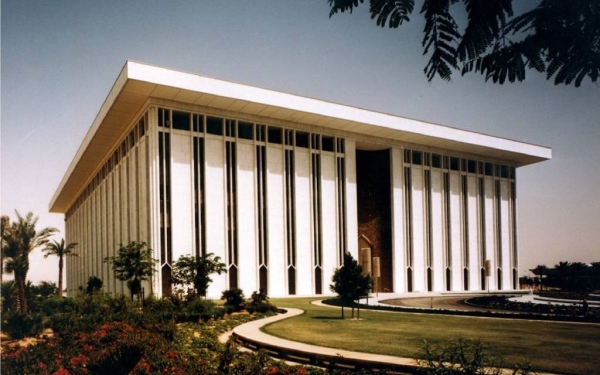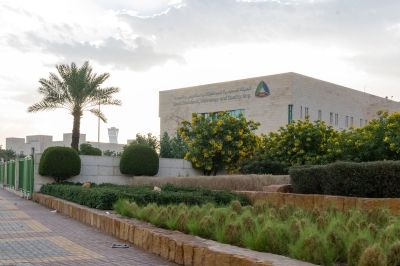

The Saudi Arabian Currency Law is a set of legal regulations governing the unit of currency in the Kingdom of Saudi Arabia,
History of the Saudi Arabian Currency Law
The first currency law in the Kingdom was issued in 1928 under the name Hejazi Najdi Currency Law, during the reign of the Founding King Abdulaziz Bin Abdulrahman Al Saud, which led to the minting of the Arabian Riyal. This was followed by the second currency law and the Currency Control Law on July 16, 1957. The third currency law was issued during the reign of King Saud Bin Abdulaziz Al Saud on December 15, 1957. The previous laws were then repealed with the issuance of the fourth currency law on December 31, 1959, which is still in effect today. On June 14, 1961, official banknotes in denominations of SAR1, 5, 10, 50, and 100 were introduced. A Royal Decree was issued on November 24, 2020, approving the Saudi Central Bank Law, which changed the name from the "Saudi Arabian Monetary Agency" to the "Saudi Central Bank", while retaining the abbreviation "SAMA".
Characteristics of the Saudi Arabian Currency Law
The Saudi Arabian Currency Law defines the unit of currency as the Saudi Riyal, which is divided into twenty qirshes, and each qirsh is further divided into five halalas. The law establishes the value of the Saudi Riyal as 0.197482 g of fine gold, known as the "parity rate". This parity rate can only be adjusted by a Royal Decree and in accordance with the provisions of international agreements to which the Kingdom is a party. The law also restricts the minting, printing, and issuance of Saudi currency exclusively to the Saudi Arabian Monetary Agency, (which is now known as the Saudi Central Bank).
Issuance of currency denominations in the Saudi Arabian Currency Law
The Council of Ministers, based on a proposal by the Saudi Central Bank and with the approval of the Minister of Finance, determines the denominations of coins and banknotes that may be issued for circulation. This includes decisions on their shapes, designs, drawings, quantities, measurements, contents, fineness, weights, sizes, and all other specifications, as well as their costs. The council also decides on the place where the dies or molds, and the specimen signatures of those authorized to sign banknotes, are securely kept, along with the safeguards against counterfeiting, and the place and timing of their printing or minting. Furthermore, the Council of Ministers selects the banks where foreign currencies, which constitute part of the currency cover (Kingdom’s reserves), are to be deposited, ensuring that they are first-class banks. The Saudi Central Bank is also responsible for investing the Kingdom’s foreign exchange reserves in foreign securities in accordance with the standard practices adopted by central banks.
Exchange and withdrawal of currency denominations in the Saudi Arabian Currency Law
The law grants the Saudi Arabian Monetary Agency (now the Saudi Central Bank) the authority to determine which denominations of banknotes and coins should be exchanged or withdrawn from circulation if they no longer meet the conditions that render them suitable for use. It also outlines the methods of disposal or the process by which such currency loses its legal tender status after a grace period of no less than one month, should the withdrawal need to be expedited in the public interest.
The Central Bank is authorized to set the conditions under which worn or damaged currency can be exchanged. For example, no payment will be made for banknotes that have lost their identifiable features, more than 50 percent of their surface area, or their serial numbers or required signatures. Similarly, coins that have lost their features, have been cut, filed, pierced, chemically washed, deformed, or altered in shape will not be exchanged unless it can be conclusively proven that the damage was due to force majeure. In such cases, the court is empowered to order compensation. The law also mandates the seizure and confiscation of counterfeit and forged currency, the method of their disposal, and the preparation of a report documenting the seizure and confiscation, with a copy sent to the relevant authorities for legal prosecution. Additionally, the law requires the publication and announcement of Saudi currency information in the official gazette or any other appropriate medium.
Division of currency in the Saudi Arabian Currency Law
The Saudi Arabian Currency Law divided the currency into a decimal system, thereby changing the division of the Riyal from being divided into twenty-two qirshes to twenty qirshes. The law also abolished several provisions from previous currency laws, such as prohibiting the use of the Saudi pound as a currency, as well as the use of gold and pilgrim receipts, which were approved by earlier regulations. These currencies were subsequently withdrawn from circulation.
Related quizzes
Related articles

